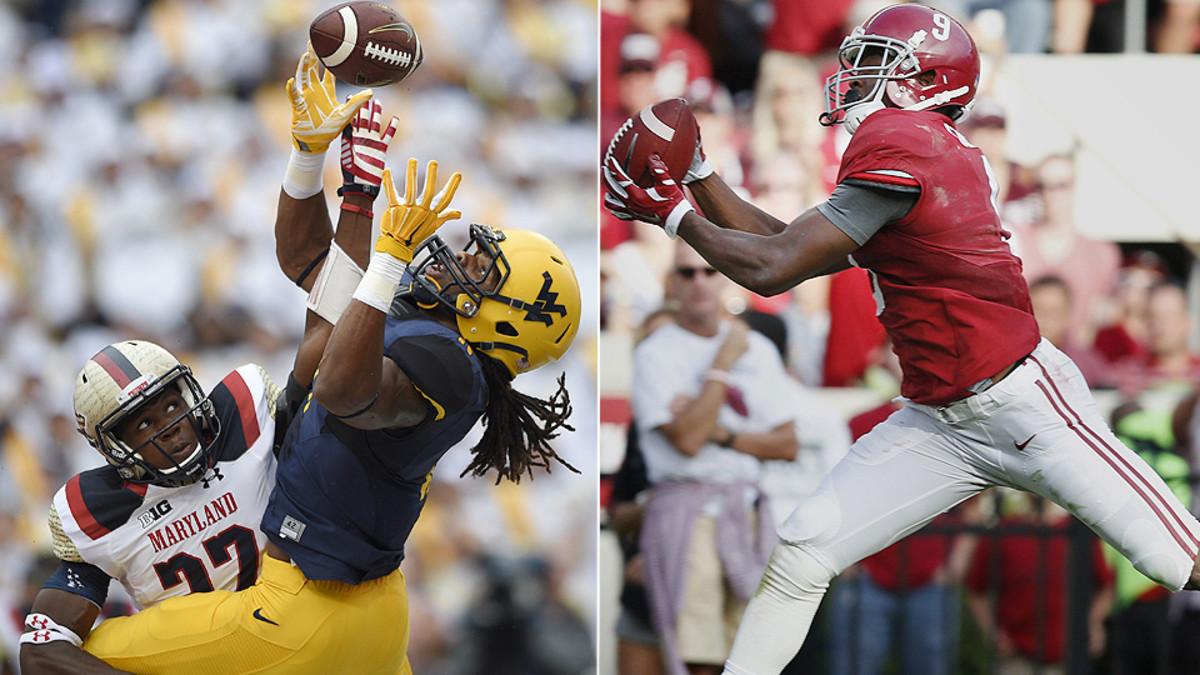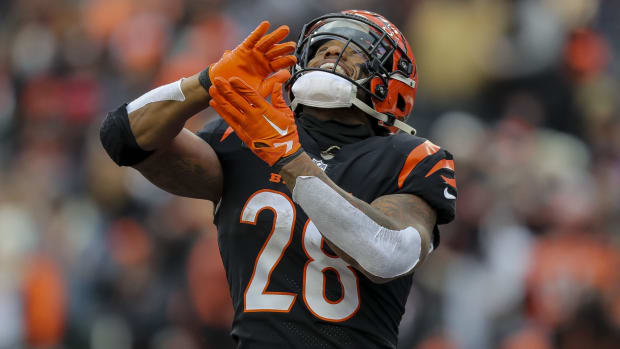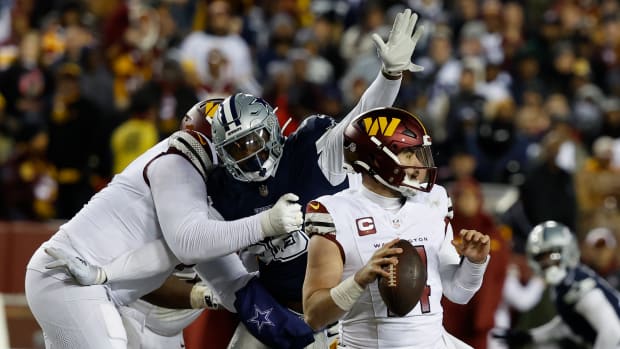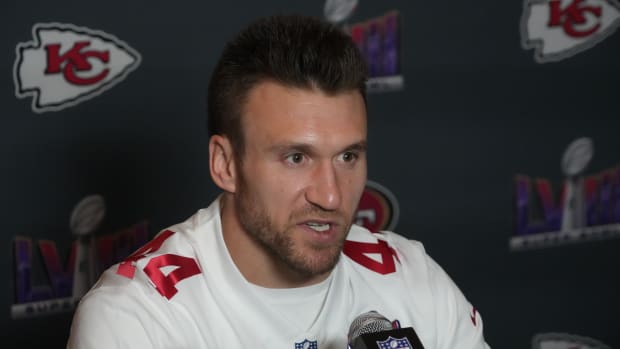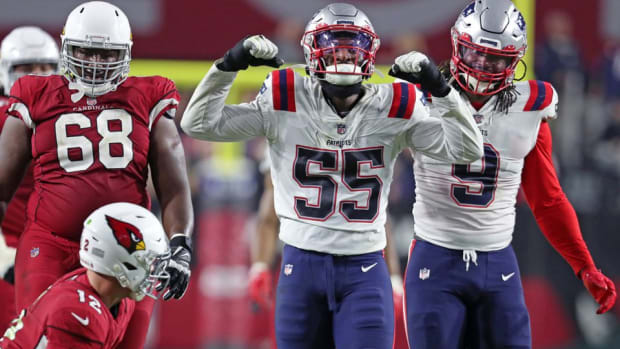Potential vs. production: Is Kevin White or Amari Cooper a better bet?
In every draft, NFL teams measure the ceiling of each player, weighing the heights he may reach in his prime against the skills he can be expected to bring right away. Some teams tend to err on the side of caution, preferring players who have started for multiple years in big programs against top-tier competition, because it's ostensibly the most reliable way of determining how a player's skill set transfers from college to the pros. Other teams are perfectly fine with taking risks on small-school players or prospects with enticing upside but crucial gaps in their development on and off the field. For them, the calculated risk pays off enough when that fundamentally flawed player grows into a valuable addition at a lower price than more finished products.
• BEDARD: Bridgewater's success helps Mariota | Atlanta's ideal pass rusher
Once on path to greatness, Williams now fights to prove he belongs in NFL
The potential versus production tradeoff is evident at the top of the group of receivers in this year's draft, where West Virginia's Kevin White and Alabama's Amari Cooper have separated themselves in the eyes of many as the top two prospects. White falls more on the potential side: At 6'3" and 215 pounds, he has remarkable speed (he ran a 4.35 40-yard dash at the scouting combine, and that speed transfers to the field), can take the top off a defense at any time, and is one of the best players in this class at dealing with 50/50 balls. In White's case, those contested catches end up more 90/10 or 80/20 in his favor.
That said, White has some things to work on. He didn't run a full route tree in college, and although he's dealt with his issues with dropped passes, they may resurface when he's facing more practiced, physical and aggressive defenders at the NFL level. The team that takes White will be banking to a certain degree on what he can possibly do over what he's shown he can do, even for a player who caught 109 passes for 1,447 yards and 10 touchdowns in 2014. Watch him catch nine passes for 143 yards and a touchdown against Alabama in the 2014 season opener, and you can see both sides of the equation.
• Mock draft: Where will White and Cooper land? | Free agency grades
Cooper, on the other hand, shows the traits common among receivers who succeed as high-volume targets in the NFL immediately. There's no question about the level of competition he's faced and very little concern about his refinement as a player. Cooper has an advanced array of routes in his arsenal, he sets up cornerbacks very well, and he gets a lot of the little things it takes some receivers years to master: how to lean in and out of a route to get separation, how to time a route to an anticipation throw, when to cut back in after running vertically to gain a coverage gap and make himself an open target.
Audibles Podcast: Bucs really looking to trade down? Playing Fact or Fiction
The primary question about Cooper, though, concerns his upside. Are we overrating him to a degree because he has a level of refinement uncommon among college receivers? There's no question that Cooper's advanced skill set allows him to dominate remedial college cornerbacks in less complicated defenses, but how will that change when he's facing coverages with more dimensions and defended by NFL athletes who could capitalize on his relatively unimpressive deep speed? His nine-catch, 71-yard, two-touchdown performance against Ohio State in the Sugar Bowl was certainly impressive against a fairly advanced defense, but it's possible that this game is the upper limit of who we'll see for the most part in the NFL: a high-volume receiver (he led the nation with 124 catches) who will need to retain that catch total to be a true No. 1 player at his position. Cooper may not be counted on for explosive plays as often as White will be.
The production-potential tradeoff came up when I spoke with Greg Cosell of NFL Films and ESPN's NFL Matchup in Friday's podcast about this year's class of receivers. Greg has been watching tape for decades, and he tied the Cooper/White argument together in an interesting fashion.
Are Titans considering Mariota, or is Whisenhunt behind a smokescreen?
"He's got what you would look for, as far as his size and his movement." Cosell said of White. "He's big, he plays powerfully, and he can run. As most college receivers—and Amari Cooper might be the exception—are unrefined. I always love when I read other people saying, 'He's not refined.' Well, 99 percent of them are not refined. But Kevin White has great burst, he's got long speed, and he's an explosive athlete. He's a combination of powerful and fast."
An exceptional combination, which is why teams will be jumping all over each other to try and turn that raw clay into something truly special. When asked about Cooper, Cosell spoke of different types of value.
[daily_cut.nfl]"I made a note when I was finished watching him that he's not as explosive as, say, Sammy Watkins coming out of Clemson last year," Cosell said. "He's not that guy. I think he's got natural quickness as a route-runner, and he's got very compact movement in and out of breaks. And that's the part that's rare for college receivers. Most college receivers do not move compactly at all—there's a lot of wasted motion. He understands pace as a route-runner, and he understands the purpose of routes and how to set up cornerbacks. So, he has the subtleties of route-running. I'm just not sure he's explosive in that sense of the word."
You can hear the entire podcast, which features 80 minutes of discussion about the 2015 receiver class, by clicking below.
































